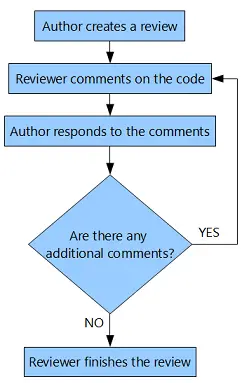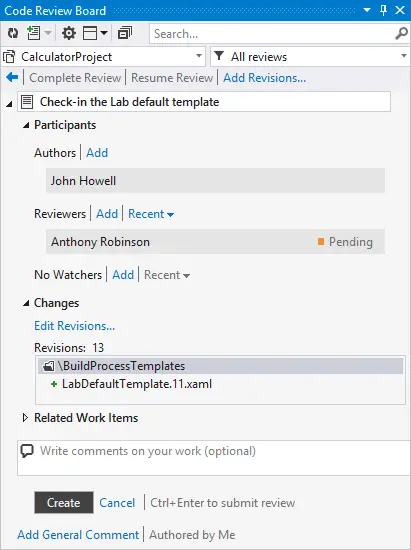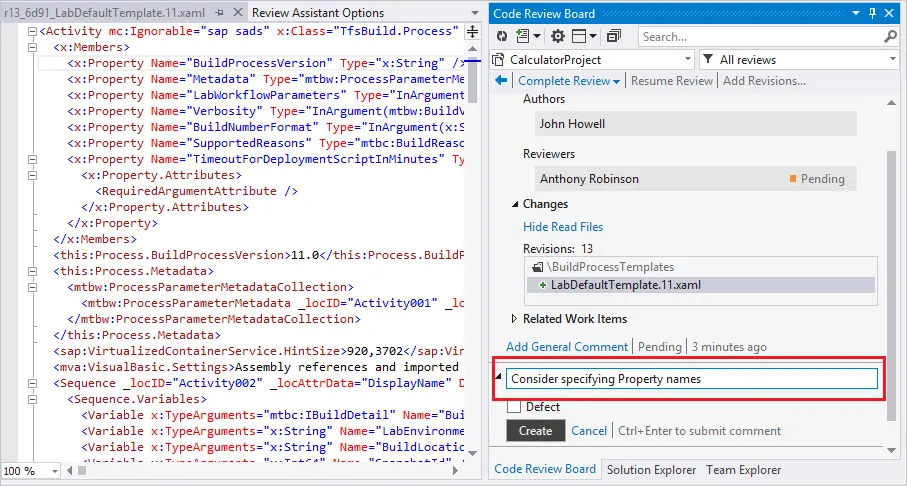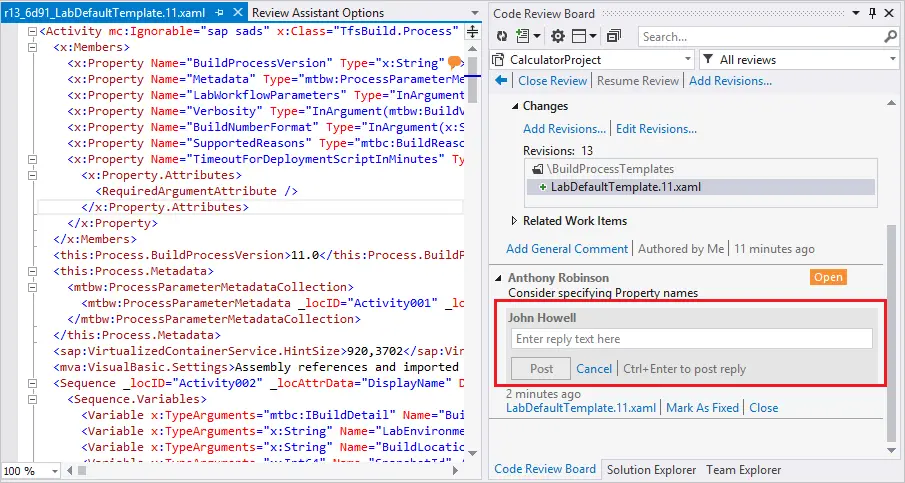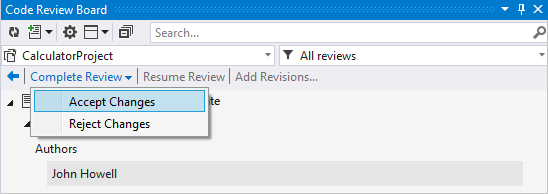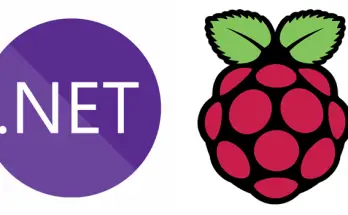Table of Contents
In this post we'll talk about Review Assistant, a code review plug-in for Visual Studio created and developed by Devart that allows you to create review requests and respond to them without leaving the Visual Studio environment; it includes lightweight support for formal code review, including a per-comment discussion tracking. It also integrates with most code comparison tools and version control systems in order to facilitate working with frequent code changes.
Since Review Assistant main goal is to facilitate the overall interactions and communications between developers and project managers, we asked our development staff to run an extensive test-drive to see if they could benefit from that: they did by integrating the peer code review process into their Agile-based workflow, and eventually were very pleased about it. Throughout this post we'll briefly summarize their overall experience and talk a bit more about the product itself.
Do we need a code review tool?
Let's start with the most basic question: why should you ever need a code review tool? The answer might be YES or NO, depending on how your development team is used to work.
As a matter of fact, most developers do not like to switch between their IDEs and other tools while working on a code: if you're one of them, you might definitely like a integration between the code review process and the development environment. A code review tool is just that: it allows to create review comments directly from the code editor and browse/manage the existing ones from an integrated Code Review Board window. Needless to say, the Code Review Board also contains all the relevant discussions for the various items.
How does Review Assistant work
To better understand how Review Assistant actually works, we strongly suggest to take a look at the following introductory video:
With and without Visual Studio
The Review Assistant Client is fully integrated with the Visual Studio environment but it can also be installed on PCs without it, thus allowing project managers - that arguably don't have any development tools installed - to still be able to track and monitor the code review process; the advantage brought by such feature can play a major role to fill the known gap between the development and management/operations teams, which is a pivotal goal in implementing a DevOps-based approach.
Flexible code reviews
Review Assistant lets the developers choose between a simple or strict code review workflow for each project: any developer can start post-commit code review on any set of revisions. The workflow supports the following features:
- Code author is automatically pulled from a repository.
- Multiple code authors can be assigned to a single review.
- Moderator role is available in the strict code review workflow.
- One review can contain code from multiple repositories.
- Unreviewed files are highlighted on the Code Review Board.
A use-case sample
The following is a simple workflow example of a peer code review between two participants: the current example is implemented with the Use simple review workflow option enabled (which is disabled by default).
#1. Author creates a review
To create a review, the developer (which we'll call author from now on) must click to the Start New Review button on the Code Review Board window. He'll will be prompted to add review data (Review title, Author, Moderator, Reviewer, Watchers, Revisions, and Description).
Once all the relevant info have been inserted, the developer can click to the Create button to complete creating the review (see screenshot below):
As soon as he does that, the review will be available on the Code Review Board.
#2. Reviewer Comments on the Code
The reviewer can now select the files from an existing revision and examine them. As the reviewer studies the code, he can right-click on any line to enter a comment there, or add a general comment to an entire review, as shown in the screenshot below:
After entering the comment, the reviewer can add it by clicking the Create button; all reviewer-added comments are saved automatically; once the reviewer has finished the review and has no more comments to add, he can Accept or Reject the author’s work.
#3. Author Responds to the Comments
During the review process, the author can respond to the reviewer’s comments and/or make changes in the code. Once done, he can click to the Mark As Fixed button: as soon as he does that, the Open label will switch to Fixed. To respond to a reviewer’s comment, the author can click the Reply button, enter a reply text and click the Post button to send it, as shown in the screenshot below:
#4. Reviewer finishes the Review
If the reviewer has further remarks, he can click the Reopen button and reply to the author (if he does that, the workflow goes back to #2); in case the reviewer has no further remarks, he can click the Close button to finalize the comment (see screenshot below):
Once done, he can click to the Complete Review button placed at the top of Code Review Board to finalize the whole review; when he does that, a popup will appear with two possible choices: if the code has no errors, he can select Accept Changes, otherwise he can Reject Changes.
Video-Tutorial
If you want to know more about how Review Assistant can help you to interact with your development team, you can check out the following Review Assistant Introductory Tutorial: a 6:15 minutes short video that shows the main elements of the code review process on a sample project with a 4-member team.
Compatibility
Review Assistant supports the most widely adopted source-control providers such as TFS, Subversion, Git, Mercurial, and Perforce.
System Requirements
The Review Assistant system requirements depends on the machine role:
Client machine
- 2 GHz or higher processor
- 1024 MB of RAM or more
- 35 MB of free hard drive space
- Microsoft Windows Vista/Windows 7/8.x/10
- Visual Studio 2010, 2012, 2013, 2015, 2017, and 2019 (except the Express editions), or Visual Studio Integrated (+ Isolated) Shell 2013
- DirectX 9 compatible video card running at 1024 x 768 or a higher-resolution display
Server machine
- SQL Server 2017, 2016, 2014, 2012, 2008, 2008R2 (including Express editions), LocalDB 2012 or higher (usually delivered with Visual Studio 2012 and higher versions): you can download all SQL Server editions here.
- 2 GHz or higher processor
- 1024 MB of RAM or more
- 100 MB of free hard drive space to store a database
- Windows Server 2008 or higher
- .NET Framework 4.0 or higher installed. You can download .NET Framework here.
Documentation
Pricing Model and Free Plan
When you download Review Assistant, you get the full-featured free version of the product, which includes a 30-day trial for unlimited users and projects. After the 30-day trial ends, the software will switch to a free plan (with some sizing limitations) which can be still viable for small development teams.
Free Version Limitations
Upon the expiration of the free trial license you can:
- continue using the free version restricted up to 3 users and 1 project
- buy a permanent license if you have bigger team.
To learn more about Review Assistant licensing, refer to the Installing a License Key from Client UI and Installing a License Key on a Server Machine articles.
About Devart
Founded in 1997, Devart is currently one of the leading developers of database management software, ALM solutions and data providers for most popular database servers.
Their released products include DBMS tools for SQL Server, MySQL, Oracle and PostgreSQL, Productivity Tools, ADO.NET Data Providers, ORM Solutions, ODBC Drivers, SSIS Components, Excel Add-ins, Delphi Data Access Components, dbExpress Drivers and more.
For further information about their products and releases, visit their website.
Conclusion
All in all, we found Review Assistant useful enough to give it a try with our development team: we liked a lot that it could be used with or without Visual Studio, thus being able to make Project Managers interact with developers (and vice-versa) which is definitely a great advantage to enforce either an Agile-based or a DevOps-based methodology to any working group; if you aim to to that, and your development team is looking to improve their peer code review sessions, you might as well give it a try.

